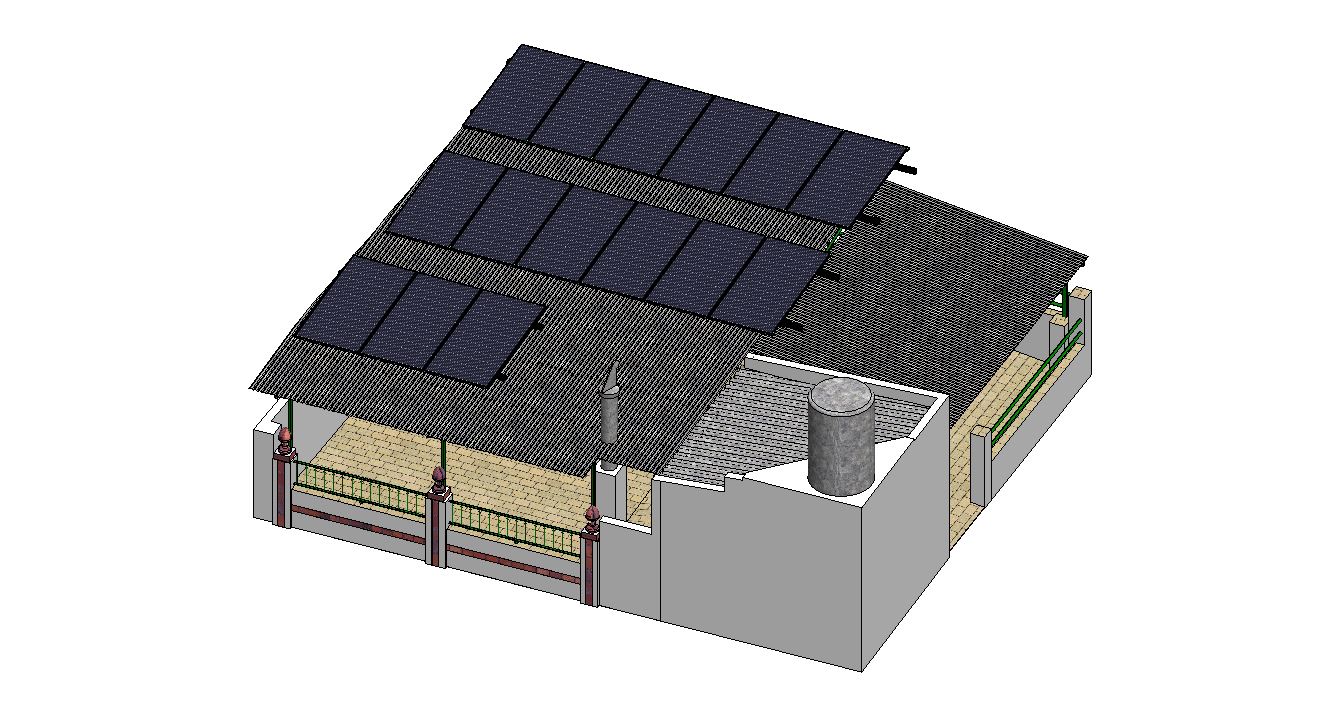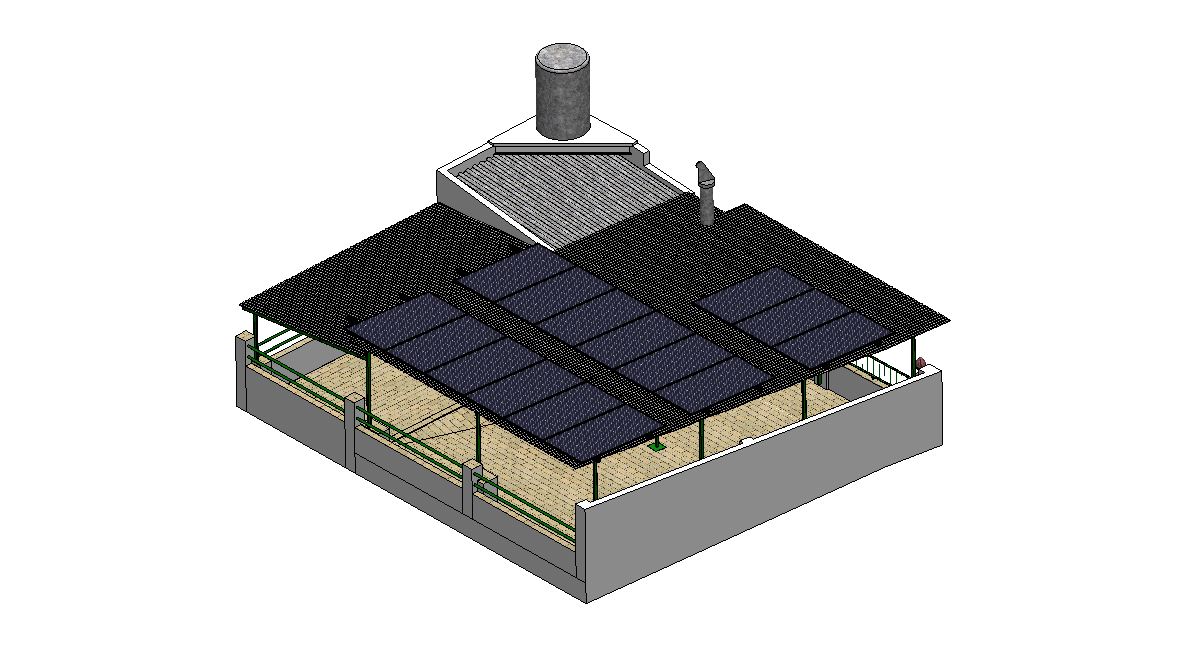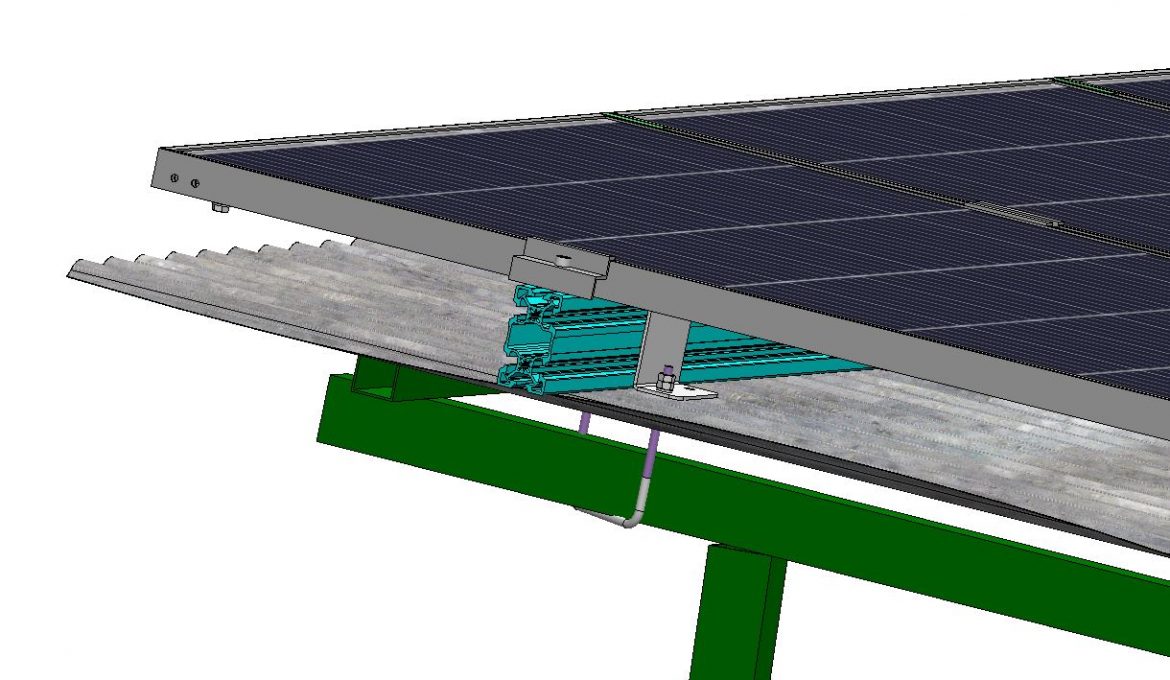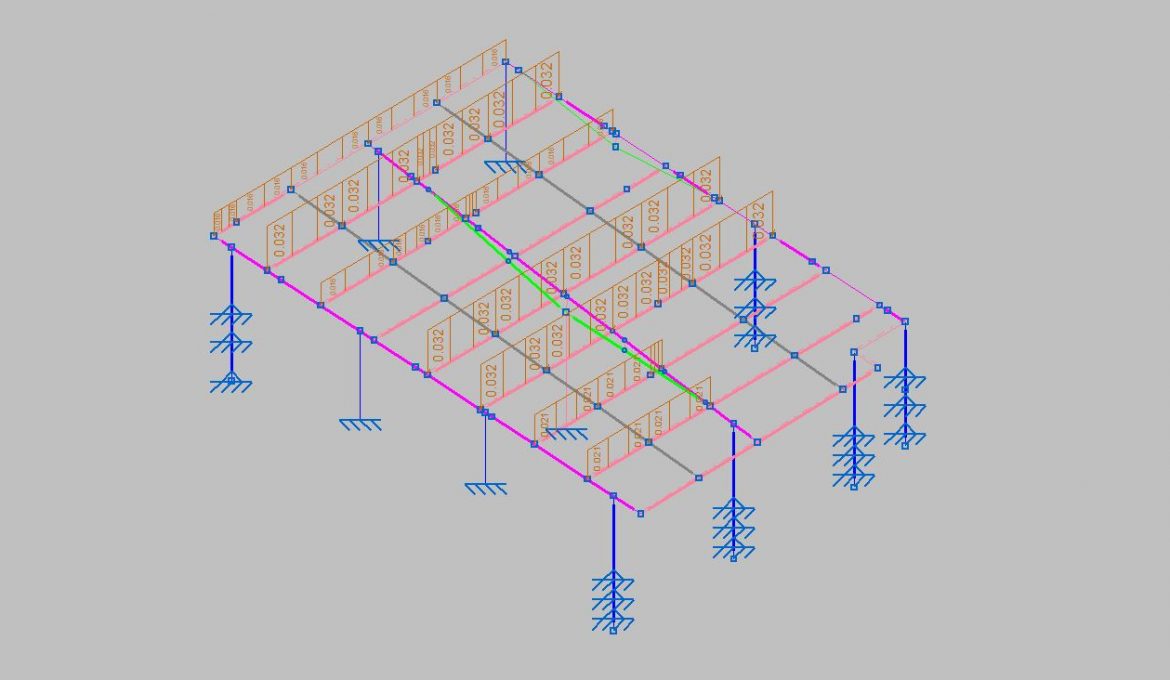Overview
With the rise in electricity prices, consumers are beginning to consider alternatives to reduce their monthly electricity bill. Royal Decree 244/2019 allows photovoltaic installation in homes for electricity consumption and the sale of surplus to the distributor to offset the energy term of the bill. The increasingly competitive prices of the elements which compose this type of installations makes more and more sense for small and medium consumers.
-
Dirección: San Agustín 25
-
Ciudad: La Palma del Condado
-
Nº catastro: 7006553QB1470N0001QF
-
Localización: 37.38ºN, -6.55ºO
This project is a preliminary economic and engineering study for the photovoltaic installation in the house of the described location. The house has a roof composed of a structure of 40.2 square and 60.40.2 rectangular profiles supporting a cold galvanized steel sheet with a southern slope of 3.3 degrees and a surface area of 55m².
The study consists of:
In this house, there is a quite marked difference between the consumption of summer days and winter days. The average daily consumption on summer days is 8kWh/day while in winter it is 24kWh/day. A standard summer day and a standard winter day have been established and corrected according to the monthly consumption of the house to become the basis for a representative monthly bill.
According to the location of the house, the estimation of the solar resource is established by comparing it with the hourly consumption in order to calculate the new monthly bill with regard to the current market prices which are established on an hourly basis.
The inclination of the solar surface with respect to the south is essential to optimize the energy and reduce the number of photovoltaic modules to be installed. The possibility of inclining them 30º (maximum annual collection) and 45º (improvement for winter collection) has been studied, but due to the fact that the structure of the house is not able to support the wind loads of these inclined surfaces, and not being profitable an adaptation with guarantees, it was decided to install the photovoltaic modules directly on the sheet metal of the structure with a south angle of 3.3º.
Monocrystalline silicon modules have been considered as they have the best efficiency per surface area and therefore a higher solar energy capture. Surface around 2m² with a power of 400W and efficiency of 20%. A performance ratio of 80% have been estimated in order to be on the safe side, although it is usually somewhat higher and depends on the temperature throughout the year.
The house roof shape allows a maximum installation of 15 modules for a total of 6 kW, since there are shading elements such as a chimney and a water tank located to the south.
Since it is not possible to tilt the modules to obtain more solar energy, they will have to be placed parallel to the roof sheet metal, minimizing the wind loads, so all the load will be practically vertical and the structure of the house will not suffer excessive modifications.
The structure that supports the modules will be made of aluminum to reduce the dead load on the house structure and will be provided with anchors that will be screwed to the rectangular profiles of the structure by means of brackets.
The structure which supports the roof has been calculated to comply with the Technical Building Code (CTE) to ensure the safety of the people which live in it.
On the basis of the study carried out for this house of 3.3kW of contracted power, the following is an estimate of the monthly electricity bill according to the different market tariffs compared to those that would be obtained with a photovoltaic solar installation in the house.
In accordance with the Royal Decree, the electricity surplus can only compensate for the energy term. The distributor will continue charging for the power term, electricity taxes and equipment rental. We will never get negative bills.
Taking into account that this photovoltaic installation has a price of around 7000€ and that there are currently regional subsidies of 40% of this price, the return on investment is 3.5 years with respect to the regulated electricity market tariff and 6.5 years with respect to a single tariff in the liberalized market.












